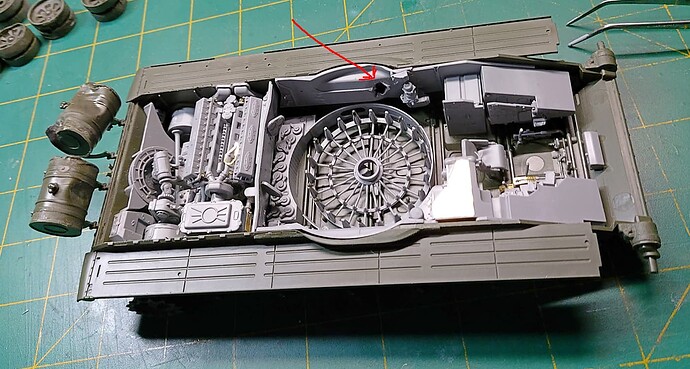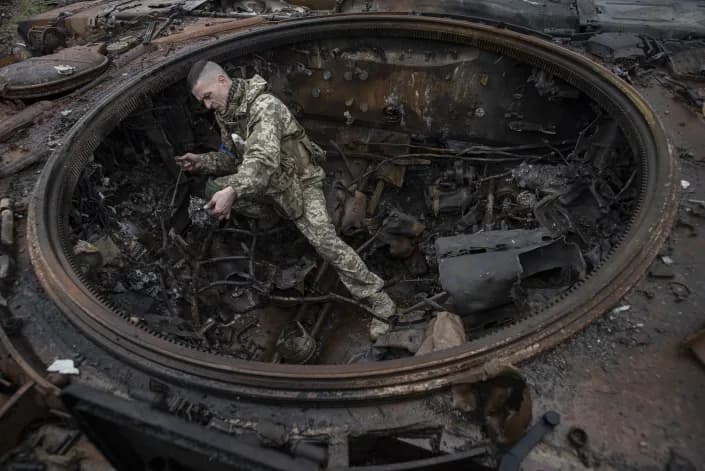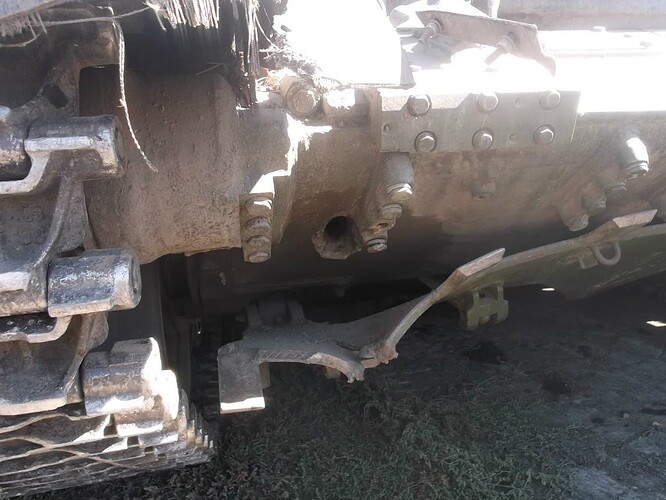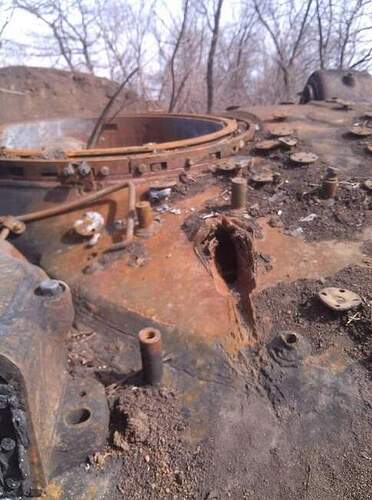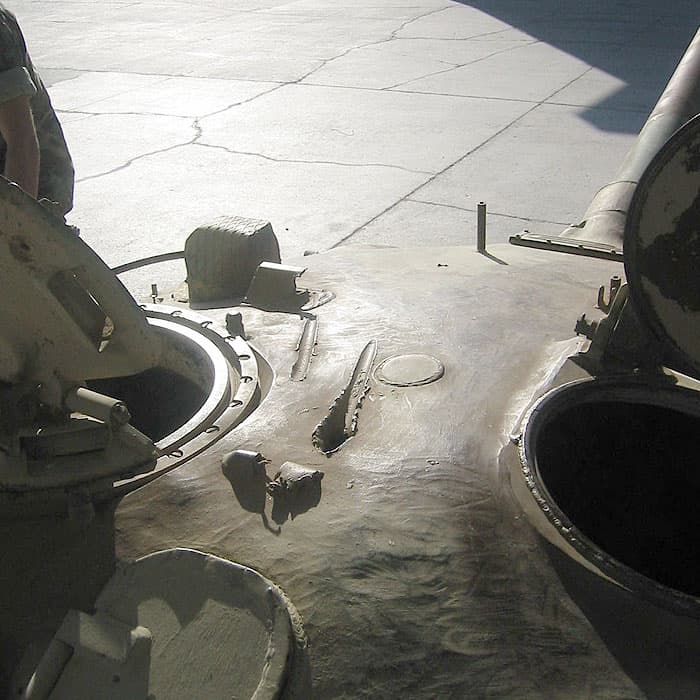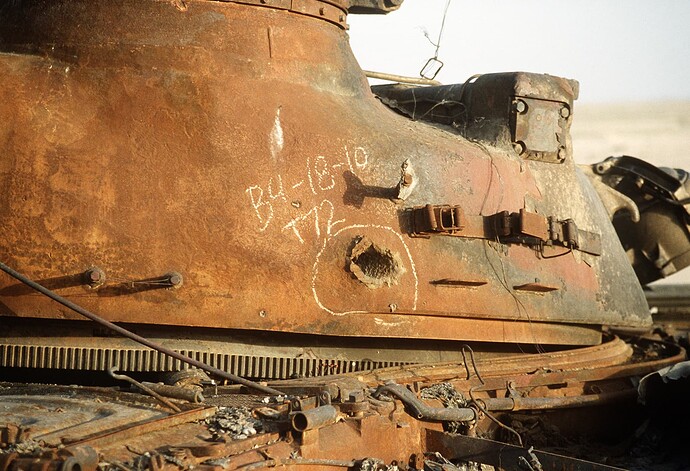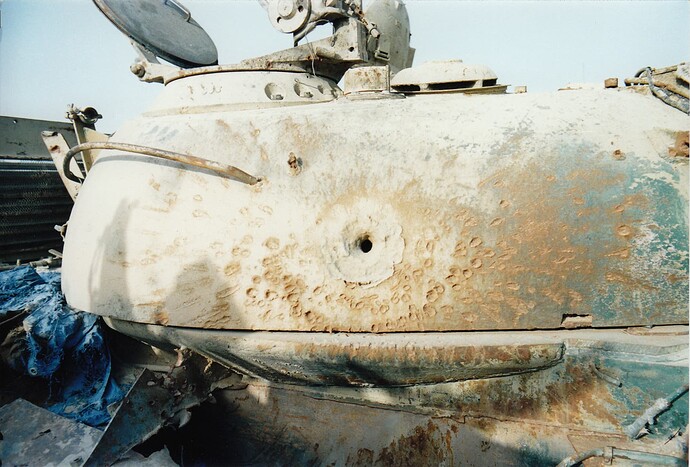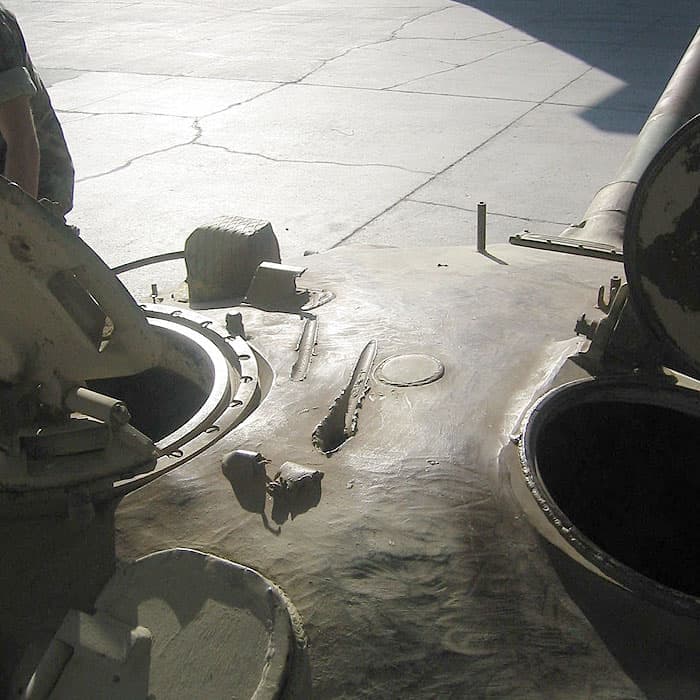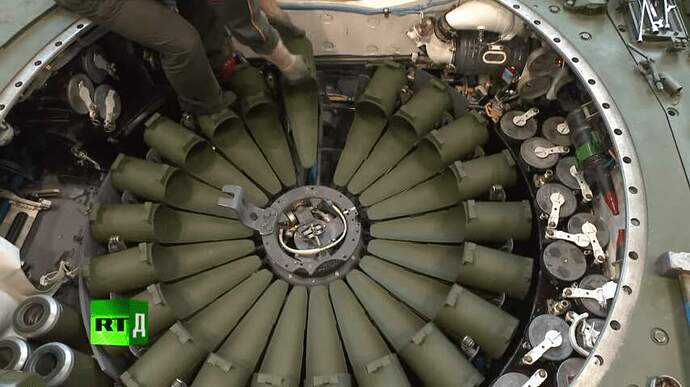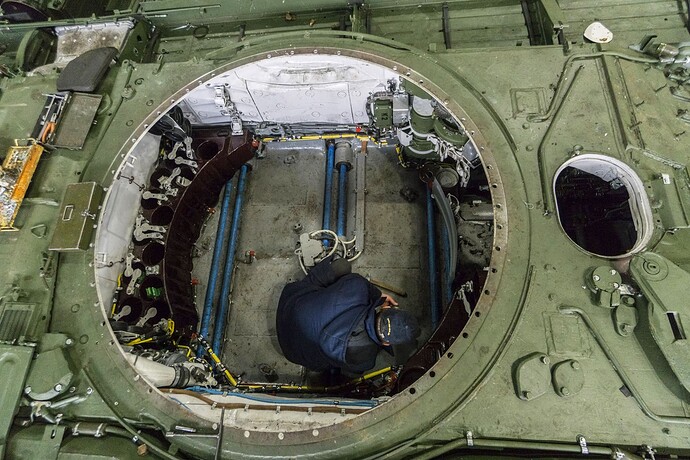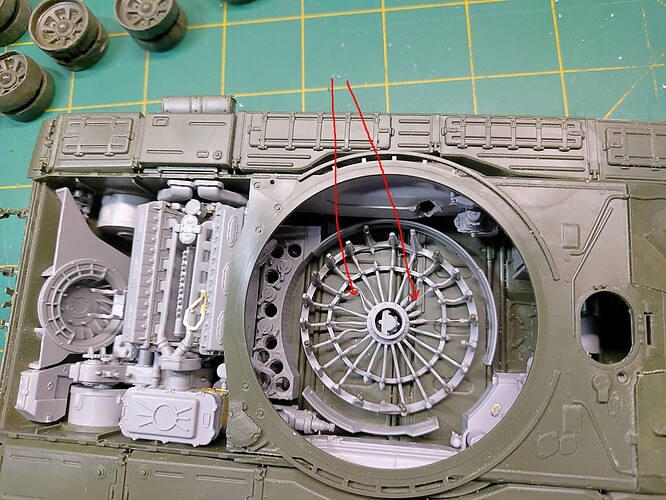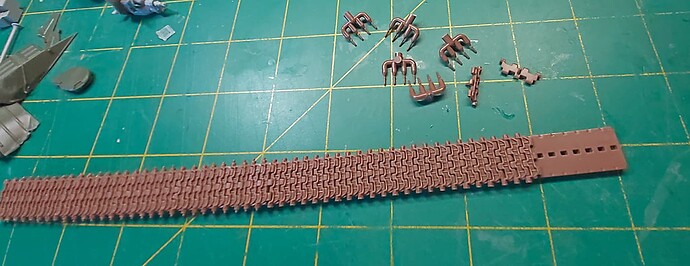I intend having the turret well out sitting on the front of the tank. Keep in mind that I’m after a perception/look rather than a technically correct explosion. But to look right it has to follow a logical path.
Interior finished. All sub assemblies ready to be painted. But first I have to procrastinate over what to ‘damage’. The red arrow points to the hole the shell came through. Prototypical? Maybe not but a hole is a hole.
I’m still pondering fender damage.
Next the tracks.
More than likely the rear bulkhead would be destroyed. The carrousel would not be intact.
A good view of the color of the burnt roadwheels and the ashes left behind.
Was the incoming shell an armor -piercing (APFSDS) round or a Shaped charge (HEAT) warhead? If HEAT, the fender and stowage items near the impact point need to be damaged. If APFSDS, they are fine. Also, if the turret is blown off because the ammo exploded, then the carousel needs to be damaged, as in the photos above, and the box behind it, which contains propellant charges for the ammo, needs to be blown up. The item outlined in green is what I mean.
Ken
Thanks. All is dry fitted and this information helps plan the destruction. Keep in mind my first comments above. The tank was returning to reload so no onboard ammo. Theory/scenario is that an empty T72 is hit and the turret blew out. Followed by a relatively short fire. So not a completely destroyed T72.
All the images I have looked at show very little hull distortion. Nor fender destruction. Some but not a lot.
Question - I never see any floors of the turret in images. So do they blow out? Melt? It suits not to have a floor as it leaves the internals of the turret exposed for viewing.
If no ammo then the turret would most likely remain on the hull. Nothing to blow it off.
Sabot impact.
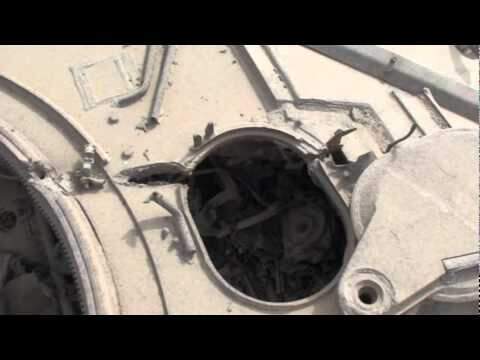
HEAT round damage.
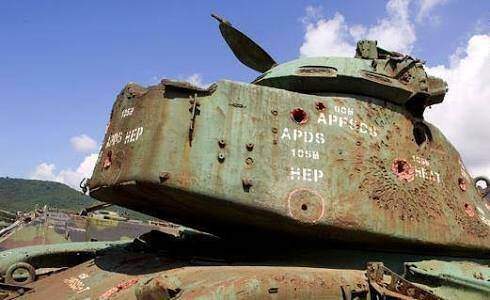
The only problem is that the piece outlined in green has propellent charges molded into it. They would either not be there, or be blown up. Either way, they should be removed. Whether you actually do that is up to you, if you cover it with enough debris, no one will be able to tell.
Ken
@TopSmith Where was this photo taken:
I took a photo of a T-62 like that I took at the NTC about a million years ago!
Ken
I just looked on Google for SABOT damaged tanks.
Would there still be propellant if they had used all their rounds?
No, there would not be any propellent left. The ammo comes packaged with one projectile and one propellent charge each. This is why that stowage rack should be empty. Drilling that piece out would be a lot of work, which is why I said you could just cover it up with debris.
Ken
Edit Here is one full:
And one empty:
OK I drilled out some of the propellent holders. I didn’t have the heart to destroy all the lid details on all of them. The sad thing is that this was/is the only piece I had glued in. (other parts rely on it for alignment).
I heated the carousel up to do some damage to it! ![]() It went a bit overboard and some of is simply shriveled up. Time for some scratch building!!
It went a bit overboard and some of is simply shriveled up. Time for some scratch building!!
How bad is it? (show a picture) Since you are building a blown up tank, it is probably still usable.
Ken
Here ya go. See the red arrows. The plastic melted very quickly. So I think I’ll replace the melted sections with stretched spru.
I may cut it up and reassemble it rather than using heat.
Or possibly leave them, metal deforms under blast and heat and if it’s going to have other damages items on it then it won’t be noticeable in my opinion.
Back at the work desk.
Tracks. Who invented tracks? It’s not my favourite job. But to AH’s credit they are going together well. Gluing the fine pins is a bit tricky but non working tracks doesn’t worry me. So a bit of excess glue isn’t the end of the world. Mind you a few pins have fallen out. Maybe I need more glue!!
Question about what kind of shell destroyed the tank. If an APFSDS (Sabot) then you are fine, but if a HEAT round then the track on that side may be damaged.
Ken
Ken you are talking to a nob here. To me a shell is something you pick up on the beach or something comes out of a barrel and blows up things. ![]()
My model building is about a visual result and not a museum correct model. But I’m still after a realistic amount of realism!
I’ve doe the tracks. Not so painful. The AH tracks are well done and about the easiest of ever built.
You can see the pile of ‘waste’ from the tracks. The long strip is AH’s jigs that I glued together to make one long jig. Worked well for me that way. AH give plenty of spares. I still have to add 2 or 3 links to the tracks. I’ll do that when I get a better idea of how I want the tracks displayed. I’m leaning towards an untouched set one side of the tank and a mess the other side.
Some help needed if anyone can.
I’ve spent a lot of time looking for images from above of the T 72 engine bay. Covers opened etc as they would be if being serviced. Found zip.
I’m trying to replicate what would have happened if the blast had blown open the various hatches. I want to show the engine etc. Not the radiators.
Thanks.
OK, very basic explanation.
A HEAT round (high explosive anti-tank) shell is an explosive shell that uses a shaped charge to burn a hole through the armor of a tank. There is a very large explosion that occurs on the outside of the tank. In your case, this would cause damage to the track and fender near where the shell exploded.
An APFSDS (armor piercing fin stabilized discarding sabot) is basically a big dart that just punches a hole through the armor. It causes very little damage (almost none) to the outside of the tank.
So which kind of shell hit the tank will determine how much damage is on the outside.
There are lots of good photos around that show all kinds of engine damage, there are even some already posted on this thread. From what you stated above, I think this photo will get you what you want:
Ken
